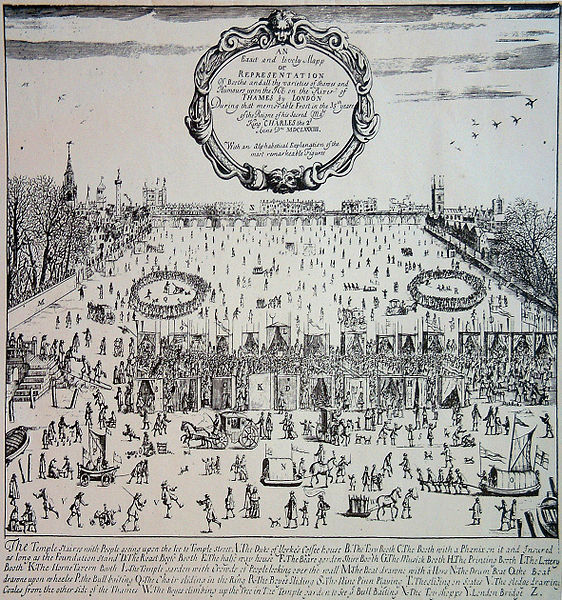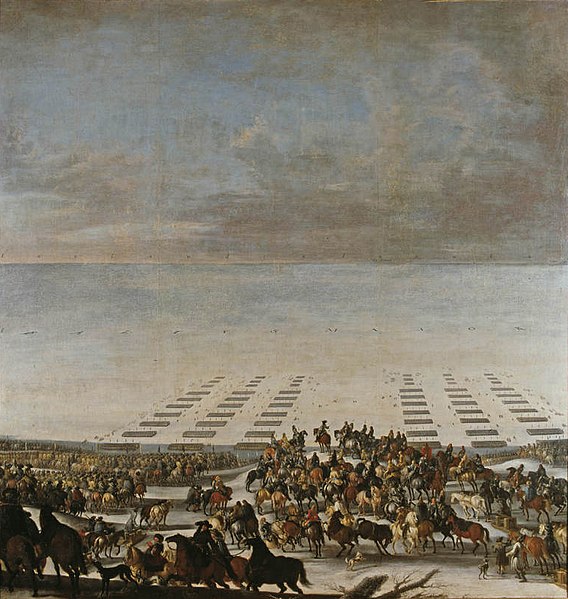The River Thames frost fairs were held on the tideway of the River Thames in London, England in some winters, starting at least as early as the late 7th century until the early 19th century. Most were held between the early 17th and early 19th centuries during the period known as the Little Ice Age, when the river froze over most frequently. During that time the British winter was more severe than it is now, and the river was wider and slower, further impeded by the 19 piers of the medieval Old London Bridge which were removed in 1831.
Thames Frost Fair, 1683–84, by Thomas Wyke
An account of the Frost Fair of 1608, the first frost fair that was called a frost fair
The Frost Fair of 1683
The Frost Fair of 1814, by Luke Clenell.
The Little Ice Age (LIA) was a period of regional cooling, particularly pronounced in the North Atlantic region. It was not a true ice age of global extent. The term was introduced into scientific literature by François E. Matthes in 1939. The period has been conventionally defined as extending from the 16th to the 19th centuries, but some experts prefer an alternative timespan from about 1300 to about 1850.
The last written records of the Norse Greenlanders are from a 1408 marriage at Hvalsey Church, which is now the best-preserved Norse ruin.
The Frozen Thames, 1677
March Across the Belts, 1658
Winter skating on the main canal of Pompenburg, Rotterdam in 1825, shortly before the minimum, by Bartholomeus Johannes van Hove








